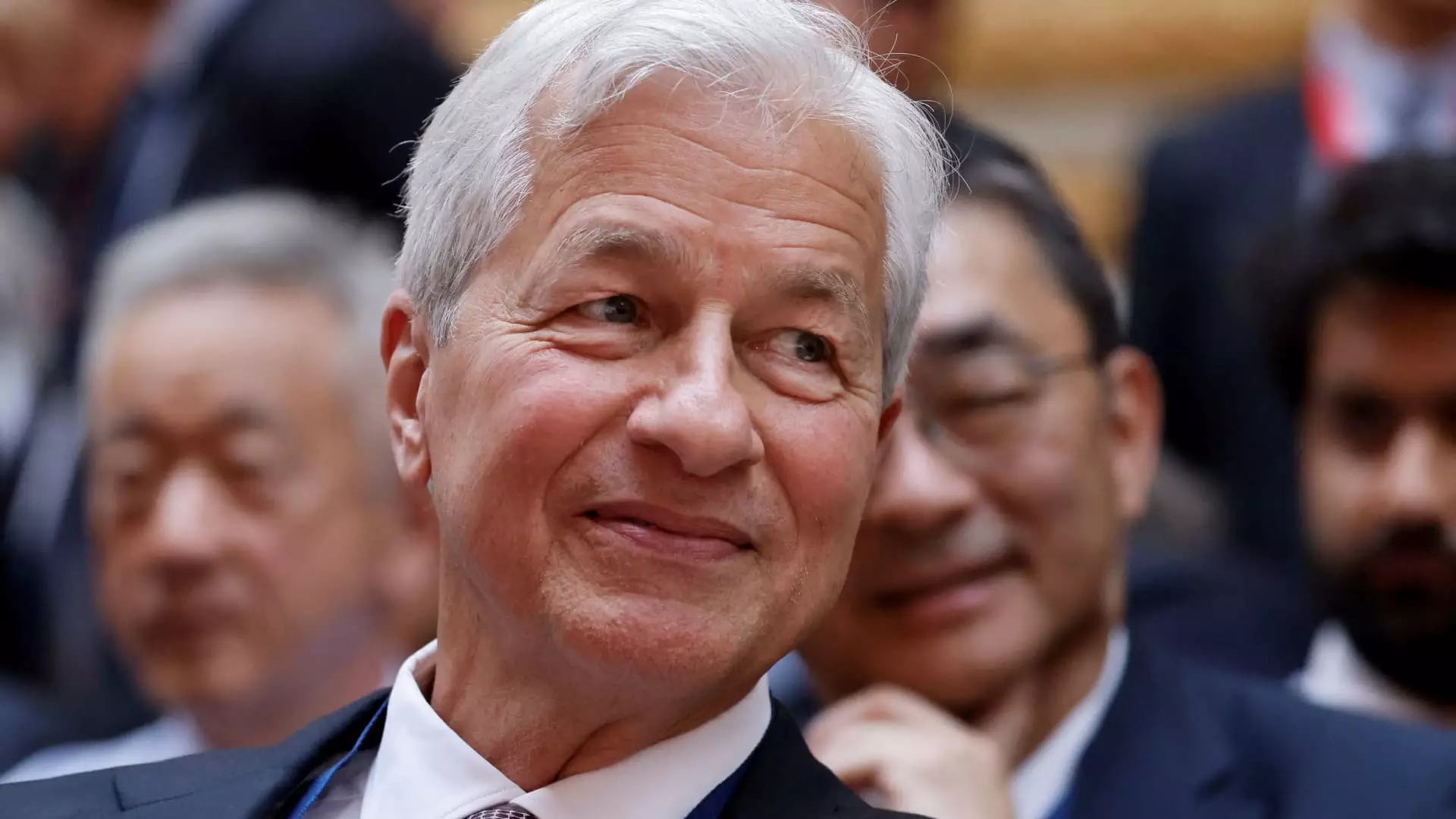JPMorgan Chase, the largest bank in the United States by assets, is currently navigating a complex financial landscape characterized by an impressive capital surplus. In recent disclosures, executives revealed their intention to ramp up share buybacks in an effort to manage approximately $35 billion in excess capital—a situation that many industry analysts refer to as a “high-class problem.” This article delves into the implications of JPMorgan’s financial strategies regarding excess capital management and explores the nuanced interplay between profit generation, investor expectations, and economic forecasts.
The backdrop of JPMorgan’s current fiscal strategy is a record-breaking year in terms of profit and revenue. Such success naturally breeds investor curiosity regarding capital allocation, particularly when significant sums are being held without an apparent purpose. Jeremy Barnum, the company’s Chief Financial Officer, candidly addressed these investor inquiries affirming that actions would be taken to mitigate the ongoing accumulation of excess funds. This dedication to capital deployment represents not only an operational necessity but also a response to shareholder pressures.
JPMorgan’s fiduciary duty to its investors mandates a prudent and strategic use of its capital reserves. Share buybacks, often viewed as a mechanism to enhance shareholder wealth by reducing the number of outstanding shares, are becoming an increasingly attractive option for deploying the bank’s surplus funds. However, the actual implementation of such buybacks exists within the confines of prevailing market conditions.
While the promise of increased buybacks appears to align with investor appetites, there remains a significant caveat. In a past statement, CEO Jamie Dimon expressed hesitance to endorse aggressive stock repurchases, especially when valuations were considered high. Dimon’s assertion that buying back stock at a premium—specifically, at valuations above double the tangible book value—might lead to a misguided allocation of resources highlights a fundamental tension within the bank’s strategy.
The price of JPMorgan’s shares has surged since these remarks, challenging the bank’s philosophies on buybacks and capital management. Despite higher stock prices generating pressure from shareholders to deploy excess capital, Dimon’s reluctance to engage in buybacks at inflated prices speaks to a deeper consideration of financial discipline and long-term strategic foresight.
Amidst discussions of capital allocation, both Barnum and Dimon have voiced concerns about the potential for economic volatility. Since 2022, there have been repeated warnings regarding a possible recession, urging caution in fiscal planning. This uncertainty necessitates a robust strategic framework allowing the bank to adapt to various economic scenarios.
Barnum emphasized the need for flexibility, honoring investor demands while preparing for potentially challenging market conditions. The stark realization that a sharp economic downturn could require the bank to leverage its substantial cash reserves for loans necessitates a well-executed plan. Analysts, such as Charles Peabody from Portales Partners, argue that disciplined capital allocation during precarious economic periods is critical. By avoiding hasty spending, JPMorgan positions itself to capitalize on opportunities that arise during downturns, where competitors may falter.
JPMorgan Chase’s current fiscal landscape underscores the complexities of managing a significant capital reserve in an environment characterized by both opportunity and uncertainty. The dual approach of increasing share buybacks while simultaneously preparing for adverse economic conditions reflects a proactive buy-and-hold philosophy. By balancing shareholder expectations with operational prudence, JPMorgan not only demonstrates a commitment to maximizing value for its investors but also affords itself the agility to adapt to unexpected economic shifts.
Ultimately, navigating the intricacies of excess capital requires a cautious yet assertive strategy—a principle that, if executed effectively, has the potential to fortify JPMorgan’s market leadership for years to come. As the economic horizon remains ambiguous, the big bank’s prudent decisions will likely continue to shape its long-term viability and success.



Leave a Reply